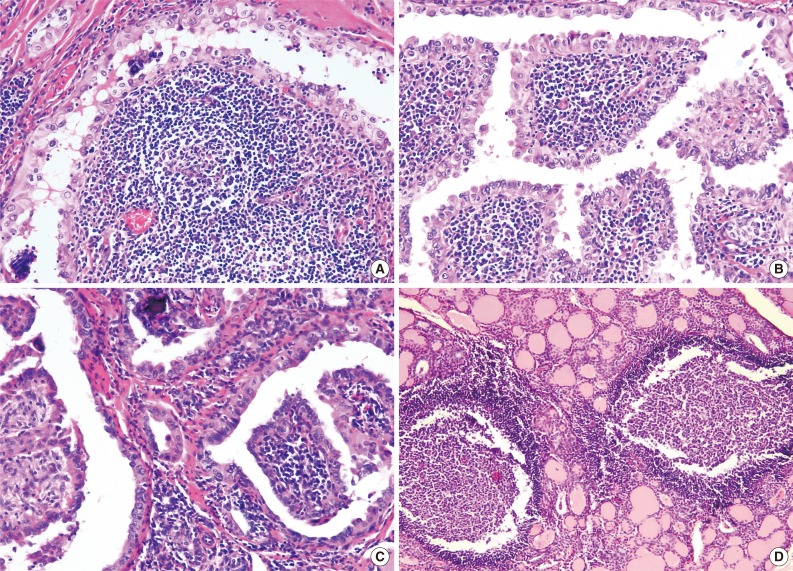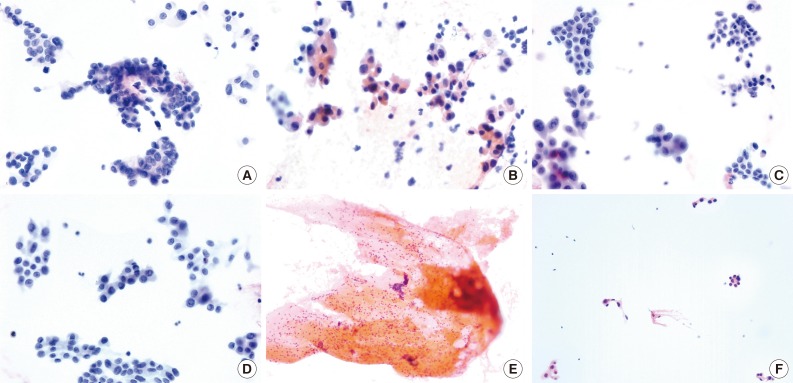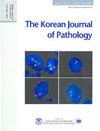Fine Needle Aspiration Cytology of Warthin-like Papillary Thyroid Carcinoma: A Brief Case Report.
Korean Journal of Pathology
Pub Date : 2014-04-01
Epub Date: 2014-04-28
DOI:10.4132/KoreanJPathol.2014.48.2.170
引用次数: 12
Abstract
The Warthin-like variant of papillary thyroid carcinoma (WL-PTC) was first introduced by Apel et al.1 in 1995 as an extremely rare subtype of papillary thyroid carcinoma (PTC) that is characterized by papillary architecture, lined by Hurthle cells, with classical cytologic features of PTC cells, and a heavy lymphocytic stroma of the papillary core. WL-PTC is now classified in the World Health Organization terminology as a special subtype of an oncocytic variant of PTC.2 Its histopathological features have been relatively well documented in cases that followed the first 13 that were described by Apel et al.1,2 However, the cytologic features of WL-PTC in fine needle aspiration cytology (FNAC) are described rather poorly and by only a few authors.3,4,5,6 Although Kim et al.7 have documented the cytologic features of an oncocytic variant of PTC in a Korean patient, FNAC of WL-PTC has not been reported in Korea. FNAC is being used widely for initial diagnosis of thyroid lesions for a treatment plan decision. The first cytological picture of WL-PTC highly resembles that of benign lymphocyterich thyroid lesions such as Hashimoto's thyroiditis. Therefore, knowledge about key points in the differential cytological diagnosis is essential for an accurate diagnosis and appropriate treatment. Here, we present WL-PTC with FNAC for the first time in Korea in a teaching case involving liquid-based cytology (LBC) preparation in a 31-year-old woman.



甲状腺wartin样乳头状癌细针抽吸细胞学1例。
本文章由计算机程序翻译,如有差异,请以英文原文为准。
求助全文
约1分钟内获得全文
求助全文

 求助内容:
求助内容: 应助结果提醒方式:
应助结果提醒方式:


